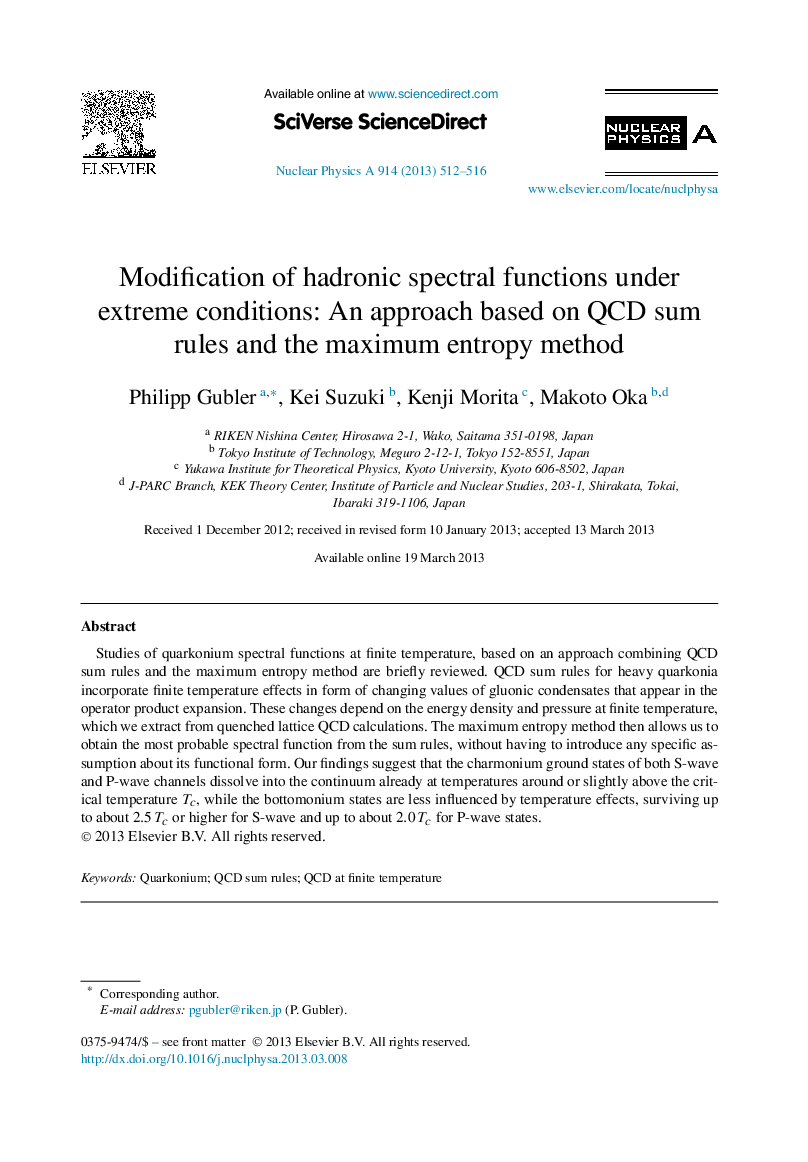| Article ID | Journal | Published Year | Pages | File Type |
|---|---|---|---|---|
| 8183855 | Nuclear Physics A | 2013 | 5 Pages |
Abstract
Studies of quarkonium spectral functions at finite temperature, based on an approach combining QCD sum rules and the maximum entropy method are briefly reviewed. QCD sum rules for heavy quarkonia incorporate finite temperature effects in form of changing values of gluonic condensates that appear in the operator product expansion. These changes depend on the energy density and pressure at finite temperature, which we extract from quenched lattice QCD calculations. The maximum entropy method then allows us to obtain the most probable spectral function from the sum rules, without having to introduce any specific assumption about its functional form. Our findings suggest that the charmonium ground states of both S-wave and P-wave channels dissolve into the continuum already at temperatures around or slightly above the critical temperature Tc, while the bottomonium states are less influenced by temperature effects, surviving up to about 2.5Tc or higher for S-wave and up to about 2.0Tc for P-wave states.
Keywords
Related Topics
Physical Sciences and Engineering
Physics and Astronomy
Nuclear and High Energy Physics
Authors
Philipp Gubler, Kei Suzuki, Kenji Morita, Makoto Oka,
